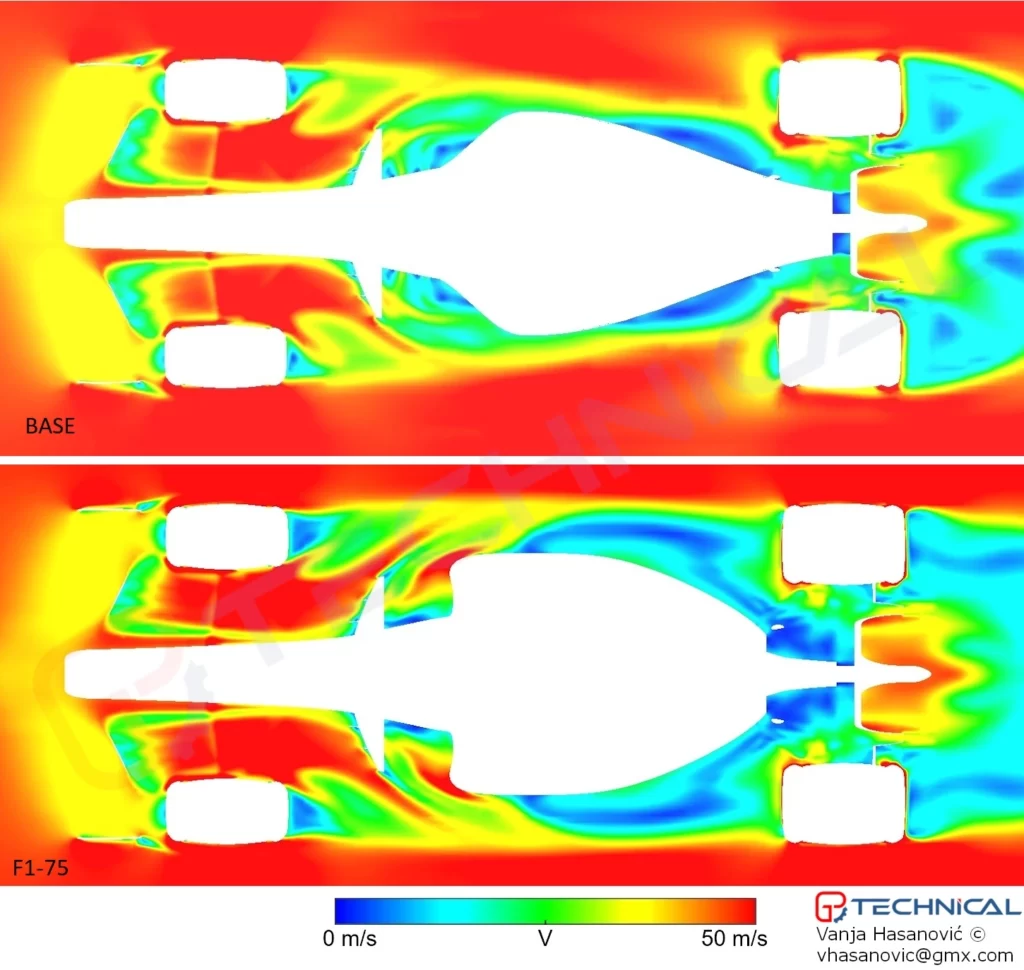In this edition of Tech Tuesday, we look into the ingenious way why the Ferrari F1 -75 is another extreme interpretation of aero regulations of the 2022 F1 Rules. This section also explains the CFD drawings and how it manages to reduce drag and improve downforce.
Ground Effect in F1 2022
Ground-effect underbody tunnels have not been permitted in Formula 1 since 1982, but the calls for their reintroduction have become rather loud in recent years. F1 has sought to reduce the current reliance on wings for downforce, which have been blamed for the “dirty air” that makes close-quarters racing difficult in modern racing, which made the idea of a return to ground effects more attractive to the rule-makers.
By creating a very pronounced entry at the front of the floor, the air moves through two Venturi tunnels. As the air flows under the car, it’s squeezed through the point closest to the ground, developing an extreme low-pressure area, creating a large amount of suction underneath. This means the floor is relied on more for downforce and reduces the wake produced by various bodywork components.

Unlike the old-school ground effects, the car won’t have sliding skirts and instead has a range of fins underneath to minimize any disturbance. To make sure each team uses the floor as it should, a standard tea tray will be developed to attach to the front of the floor.
Suggested Reading: F1 2022 Cheat Sheet
Tech Tuesday-F1-75
The big aerodynamic challenge in this area of the car remains how to maximize the speed of the airflow into the floor (now via the tunnel inlets) and down the sides and what the most efficient trade-off is between those separate flows.
But the rear surface of tub-sidepods works together with the diffuser ramp’s upper surface to form an area of higher pressure. This adds rear downforce directly on the floor but also increases the pressure on the rear of the tub-sidepod -reducing the drag. Compared to the base model, the tub-sidepod alone had 50% less drag. This looks a lot like the main reason Ferrari extended the sidepods all the way to the rear – to use this effect and reduce drag. So – F1-75 sidepods are not draggy.


At 0.3m the difference is clear, as well as the difference in airflow towards the rear tyre. At tub-sidepods model, the barge-board-like geometry created a wake going towards rear tyre, and the difference in pressure can also be seen at the first comparison picture. The low-energy wake hits the tyre and pressure-increase is a lot lower. Overall, and take this with a grain of salt, rear tyre drag decreased by more than 10% compared to base model.
In total, compared to base model the tub-sidepod model had around 1-2% more downforce which shouldn’t be taken into account as this depends heavily on overall geometry and how all the parts are working together. What’s really interesting is the drag benefit – tub-sidepod model had around 11% less drag than base model!

Since Ferrari had to extend the sidepods to use the ramp pressure increase to reduce drag, it looks like they made the tub to offset the lift this generates. This is very clear when compared to aston-like sidepods. Afterwards, Ferrari F1 -75 surely used all effects combined with cooling channel design and gills.
Suggested Reading: How Green is F1
Conclusion
A Scuderia Ferrari source told Formula 1 journalist and analyst Giuliano Duchessa that the new Mercedes car is extreme, but the Maranello team also thought about the same development direction. In the end, Ferrari decided to abandon the idea and focus on their current design and its potential.
As a result, Ferrari is not scared of the radical ‘no sidepod’ look on the Mercedes W13 which proved to be a good solution as it turned out to reduce drag and improve downforce.




